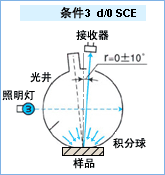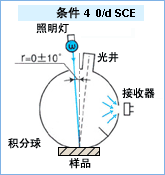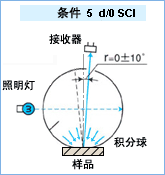as  Say, the tristimulus value color difference meter has relatively low price, the appearance is exquisite, the outstanding dexterity sex and the operation is simple and convenient characteristic. It can easily measure tristimulus values. However, colorimeters are not suitable for use in complex color analysis such as reflectance spectroscopy and color intensity.
Say, the tristimulus value color difference meter has relatively low price, the appearance is exquisite, the outstanding dexterity sex and the operation is simple and convenient characteristic. It can easily measure tristimulus values. However, colorimeters are not suitable for use in complex color analysis such as reflectance spectroscopy and color intensity.
Spectrophotometers have high accuracy and increased versatility. Because it can measure the reflectivity curve at each wavelength, it is more suitable for complex color analysis. Of course, spectrophotometers are also more expensive than colorimeters. Before choosing different types of instruments, you must consider how high the color accuracy requirements are in the application area.
Spectrophotometers have high accuracy and increased versatility. Because it can measure the reflectivity curve at each wavelength, it is more suitable for complex color analysis. Of course, spectrophotometers are also more expensive than colorimeters. Before choosing different types of instruments, you must consider how high the color accuracy requirements are in the application area.
Colorimeter is mainly used for color difference measurement in production line and product inspection.

Spectrophotometers are commonly used for high-precision color analysis and management in laboratory and product development research.

The color of the object will vary depending on the viewing conditions, the angle of inspection, and the angle of illumination. This is described in the second page of Part I. When an instrument measures a sample, the angle at which the light source hits the sample and the angle at which the light is received by the sensor, we call it a geometrical optical structure.
One-way lighting system This is the way to provide lighting from one direction. In the 45/0 configuration, the sample surface is illuminated with linear light from a 45 degree angle and the reflected light is received by a fixed position (0 degree) sensor. In the 0/45 configuration, the surface of the sample is illuminated by a fixed position (0 degree) linear light and the 45 degree sensor receives the reflected light.
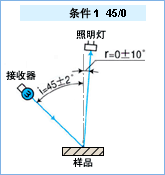
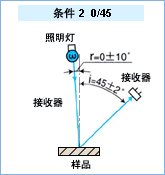
Integral Ball Scattering Illumination System This system uses an integrating sphere to allow light to be evenly directed toward the sample surface in all directions. (The integrating sphere is a spherical device with an inner surface coated with a white substance such as barium sulfate, which diffuses light evenly.) A d/0 structure instrument uses diffuse illumination of the sample and receives reflected light at a fixed angle (0 degrees). A 0/d structure instrument illuminates the sample from a 0 degree angle and receives diffuse light from all directions. (Specular reflections within a +/-5 degree angle can be excluded or included using the SCE/SCI function.)
